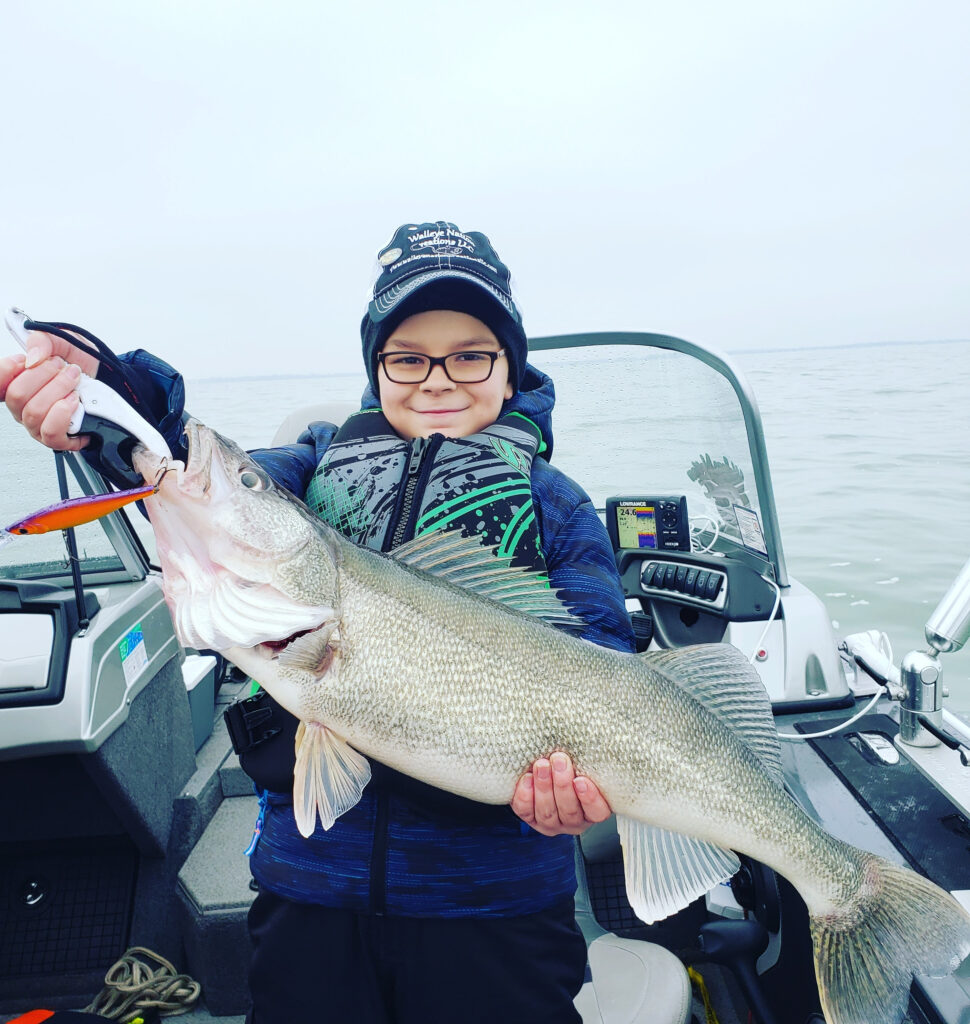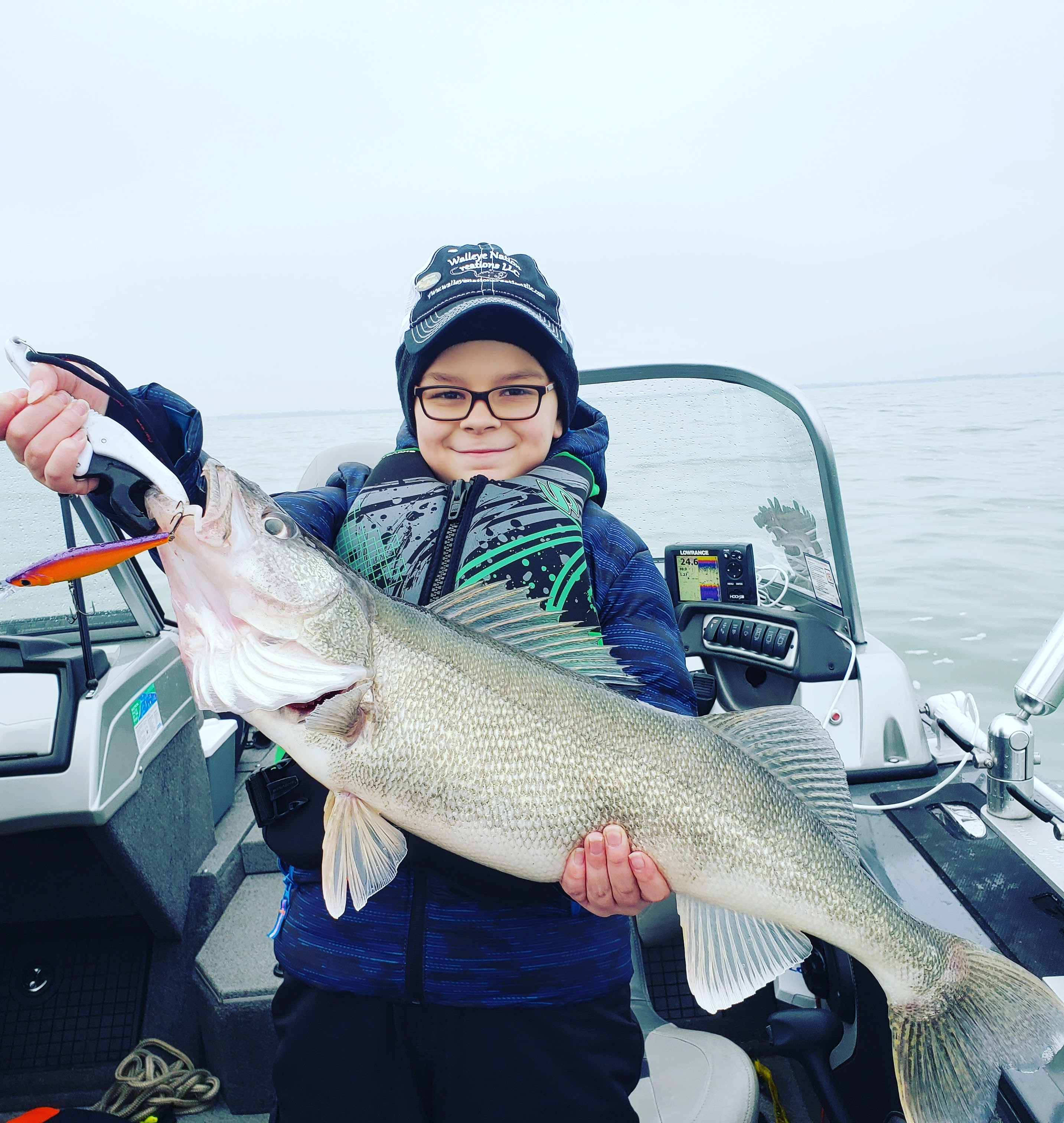Lake Erie Walleye, Yellow Perch
2022 Hatch Results

Lake Erie Walleye, Yellow Perch
2022 Hatch Results
COLUMBUS, Ohio – Results from 2022 Lake Erie hatch surveys showed western basin walleye, central basin walleye, and western basin yellow perch hatches were above average, while central basin yellow perch hatches continue to be well below average, according to the Ohio Department of Natural Resources (ODNR) Division of Wildlife. These results are consistent with the recent trend of highly successful hatches for both yellow perch and walleye in Lake Erie’s shallowest and warmest basin, and strengthen the extremely positive long-term outlook for anglers.

Caption: Excellent walleye hatches since 2015 have supported a robust Lake Erie fishery.
Western basin walleye
Division of Wildlife survey results are combined with the Ontario Ministry of Natural Resources and Forestry surveys to configure a basin-wide hatch index. The 2022 western basin walleye hatch was 83 fish per hectare (a hectare is 2.47 times larger than an acre), the ninth largest in the survey’s 35-year history and well above the average of 55.
“Lake Erie walleye anglers will continue to benefit from terrific walleye populations,” said Division of Wildlife Chief Kendra Wecker. “This year’s hatch will grow to catchable sizes in two or three years, when it will contribute to decades of excellent fishing in the Walleye Capital of the World.”
Western basin yellow perch
The western basin yellow perch hatch this year was equally impressive. The survey index was 572 young-of-year yellow perch per hectare, above the average of 461 and the seventh highest on record. Western basin yellow perch surveys are also combined with the Ontario Ministry of Natural Resources and Forestry to determine a hatch index.
Mid-summer and late fall yellow perch fishing in the western basin provided some of the best harvest rates observed in years, along with excellent size.
Central basin walleye
In the central basin, walleye production continued a trend of above average hatches with survey results of 14 young-of-year walleye per hectare, well above the average of 6 per hectare. This was the seventh highest of 33 survey years.
Central basin yellow perch
For yellow perch, the central basin is split into two management zones, the central zone (Huron to Fairport Harbor) and the east zone (Fairport Harbor to Conneaut). Results showed below average yellow perch hatches in each, with an index of 3 young-of-year perch per hectare in the central zone, below the average of 39. Similar results were found in the east zone, with an index of 3 per hectare, below the average of 38.
Conditions did not favor the survival of newly hatched yellow perch in the central basin during 2022. Variability in regional hatch success is expected on Lake Erie because of the size of the lake, differences among basins, and prevailing weather conditions. Hatch success is largely determined by the timing and availability of favorable conditions for both spawning and survival of newly hatched yellow perch in the spring and summer. Strong lake-wide yellow perch hatches are rare. It is common to observe poor hatches in the central and east zones when those in the west zone are good, which is what has been observed for several consecutive years. When conditions favor the central basin, the pattern is anticipated to reverse. Long-term data support these observations.
“Lake Erie yellow perch are surveyed and managed as regional populations within management zones. Our surveys during the past few years have shown a marked difference in the yellow perch hatch when comparing the west, central, and east zones,” said Travis Hartman, the Division of Wildlife’s Lake Erie Fisheries Program Administrator. “The Division of Wildlife uses these zones to monitor perch hatches and, by comparing results to previous years, determine safe harvest levels.”
Lake Erie hatch surveys
The Division of Wildlife completes western basin surveys in August. Those results are combined with the Ontario Ministry of Natural Resources and Forestry survey results. Additionally, central basin trawls completed by the Division of Wildlife from Lorain to Ashtabula in September and October are used in population models for characterizing regional yellow perch hatches.
Survey results are used in conjunction with results from the other Lake Erie Committee agencies to determine hatch success in each management zone. This information allows biologists to better estimate how many young fish will enter the catchable population two years later, which is one factor used to determine safe harvest levels each year.
For more information on the Lake Erie fisheries and to find fishing reports, maps, and more resources, visit wildohio.gov. Download the HuntFish OHmobile app for fishing information on the go.
The mission of the Division of Wildlife is to conserve and improve fish and wildlife resources and their habitats for sustainable use and appreciation by all. Visit wildohio.gov to find out more.
ODNR ensures a balance between wise use and protection of our natural resources for the benefit of all. Visit the ODNR website at ohiodnr.gov.






